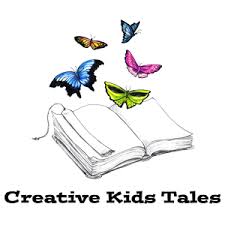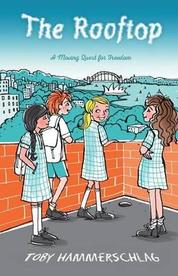| The Book of Answers by A.L. Tait (Hachette Australia) PB RRP $14.99 ISBN: 9780734417695 Reviewed by Jeffery E Doherty The Book of Answers is the second book in the gripping Ateban Cipher by A.L. Tait. It follows on from the first book in the series, The Book of Secrets. Gabe and his companions must journey across the country to a remote mountain citadel to learn the secrets of the mysterious book he has been tasked to protect. They also need to find a way to rescue Merry and Gwyn's father from the executioner and to help their new friend, Eddie - Crown Prince Edward - to help prove he is the true prince. However, the king is gravely ill and the traitors who have put a look-a-like in Eddie’s place are hot on their heels and hunting them every step of the way. The remote fortress of Hayden's Mont does bring answers to Gabe and his companions, but not to the questions they were seeking. The stakes for the main characters have risen dramatically from the events in the first book and the group must re-evaluate their priorities in their life or death race to foil the traitors. The Book of Answers is an excellent second addition to the Ateban Cipher series and is sure to be a hit with both girls and boys who love a great adventure story. The mix of female and male lead characters makes the story more interesting. Gwyn's stubborn confidence and young Midge's mysterious connection with animals, compliment Gabe and Eddie's determination. The companions will all have to build their trust and work together if they are to succeed in their quest. This book is full of adventure and intrigue and would ideally suit readers 8-12 years old. Original review on Buzz Words Magazine |
|
0 Comments
 In week three of my Writing Masterclass journey I worked through the second part of the Outlining session, Writers Block and Creating Characters. All were interesting and generated lots of notes. Thank goodness this is a video course where I get to pause and rewind what James is saying. Outlines (Part 2) - The main points covered in this Outlining session were;
Writers Block - The blank page is the enemy but with an outline this becomes less of a problem. A big cause of writers block is when a scene or a chapter isn't working. Writers start to stress and question themselves. The best way to fix this is to;
Creating Characters - One of the things that rise a book above the pack is introducing fresh, involving characters that bring a unique way of looking at the world.
 I have now finished the first week of the James Patterson Writing Masterclass, following the suggested timetable in the course notes. I have completed the first six video lessons and I'm working on the associated assignments. I am finding the course quite enjoyable and even inspiring. Though the information passed on by Mr. Patterson in the video tutorials is nothing new, he delivers it in a relaxed, conversational way that makes the lessons seem intimate. The topics covered so far are;
Passion - Habit dealt with the notion that you really need to be passionate about writing in general and in your current project in particular. If you are not passionate about your story, how do you expect readers to be. So, keep the passion alive, love what you do, believe in yourself and learn to endure rejection. Makes sense to me. The habit part dealt with stressing the need to write every day, to make writing a habit, a part of your daily schedule. How can you call yourself a writer, if you don't write? Raw Ideas. This one was interesting. Mr. Patterson says that it is really rare to find a new and fresh idea, but finding ways to put several ideas together in a new and fresh way can create a unique story. He writes his ideas down and keeps them in an ideas folder. There is nothing new in this information but it is still good solid advice. The other thing he stressed in this lesson was to "read widely and learn about lots of things." You can't come up with ideas about things you don't know and you never know what piece of obscure knowledge might spark that brilliant idea for a book. Plot. This lesson wasn't so much about how to plot a novel in a nuts-and-bolts way. It was more about the necessity of raising the stakes in your story and about creating a worthy villain for your hero to face. The challenges to your hero both internally and externally need to be challenging and interesting. One thing he said resonated with me. "Condense your plot, concentrate on causality. The king dies - then the queen dies is a story. The king dies and the queen dies of grief, is a plot." I thought that was an interesting way to put it. Research. This lesson stress the need to git it right. Know the details, know the locations, know your vocations because if you get it wrong, there are readers out there who do know and you will lose them forever. If you are conducting interviews as part of your research, make sure the interviewee is verbal. Finding a talker who is passionate about their field is like striking gold. Another point was not to be a know-it-all. Some writers decide that if they have done all this research, by god the reader is going to know about. They drop huge - pointless to the story - info dumps so the reader can see how clever they are. Mr. Patterson also stressed that there are no excuses. With the internet, there has never been an easier time to do your research. Outlines. This lesson has been split into two parts. It is the lesson I have been the most excited to get to because outlining is one of my weakest skills as a writer. I took pages of notes on this session. It was set out in a practical way, working through the process he uses to outline his books. Starting with jotting down everything he can think of that happens in the story, just one or two lines for each thing. Sorting through, discarding some ideas and adding more, then ordering them. He then takes the time to expand on each idea with just enough detail to know what happens in that scene. Mr. Patterson says that sometimes he might spend up to three months getting the outline right. He believes this is one of the most important aspects of writing a novel and can save so much time and heartache in the long term. The best part of this lesson is the fact that he has included, in the workbook, the complete outline for one of his favourite books, Honeymoon. Reading through this outline has given me some invaluable insight into the process. Stay tuned for week three.  Week One Some time ago I saw a Youtube advert for a writing masterclass with James Patterson. I didn't skip the ad, in fact I clicked on the link and read up on the on-line video course. It actually looked pretty cool and dealt with several elements of writing I struggle with. Even though I thought hard about it, I didn't sign up.
Lately, I had been thinking about the masterclass again and looking at my reasons for not signing up. True, I still have a lot of stuff on. I'm working full time, I'm trying to finish the second book in my middle grade series, I have a number of artistic projects in the pipe-line, including producing a dozen illustrations for an upcoming biography. I have a family and a new grandchild on the way. Yes, work and some family matters have been quite stressful over the last two years and I don't foresee much of an improvement in the coming year on those fronts. The cost and the negativity toward Mr Patterson, these were all just excuses and if I want to treat my writing professionally, I need to be professional. I need to prioritise my writing career and stop treating it like a hobby. Although not my favourite author, James Patterson is a major success. I have enjoyed reading his titles that I have read and he must be doing something right because his books usually make the New York Times Best Seller list. Then last night I was on Youtube and the advert for the course appeared again. Omen? Coincidence? Simple good marketing? Who cares. I signed up and started the course today. I am going to post weekly as I work through the class and share my experiences. So far, I have watched the introduction, the second video lesson on Passion and Habbit, and I have started the third video on Raw Ideas. Now, I am working on the assignments; writing for at least one hour every day and coming up with three raw book ideas. Okay, back to work now, time to put those raw book ideas down on paper... See you next week with a progress update.  I am very proud to be the featured Emerging Illustrator on the Creative Kids Tales site for the month of February. Creative Kids Tales is a wonderful site that helps illustrators and authors, especially emerging ones to increase their exposure. It is also a great resource for readers, writers and illustrators with competitions and a huge collection of children's book reviews. If you would like to visit their site just follow this link. Creative Kids Tales Here is the interview I had with site's coordinator, Georgie Donaghey. Why do you want to be a published author/illustrator? I have always been a bit of a nerd. I built a bookcase that looks like the TARDIS from Doctor Who. All of my favourite books live in there. The real TARDIS is bigger on the inside and can take you to meet weird and wonderful characters in new worlds full of adventure. To me books are the same. They are bigger on the inside too, portals to strange and wondrous places. Who wouldn't want to create something that amazing. But I suppose the real answer is, being published is like being accepted. It is graduating from being a writer/artist to a author/illustrator. How long have you been writing/drawing? I have been writing stories and really bad poetry since high school, but mainly as a hobby. I started going along to the Kids and Young Adult Literature Festivals about ten years ago and decided then that if I was going to call myself a writer, then I was going to have to start taking it seriously. Since then I have been trying to learn as much as I can about making my writing better. I have been drawing for as long as I can remember, probably since I could hold a pencil. How did you celebrate your first publication? My first children's book, "Paper Magic" came out in late 2013. I was lucky enough to be able to write and illustrate the book. When I received the acceptance email from the publisher, I did an extended Happy Dance in front of the computer, then did another one when I printed the email and showed my wife. We celebrated again during the book launch at the school where I work - with non-alcoholic sparkly wine - it was a children's book and we were at a school so it only seemed right to do it that way. A number of the kids from the school were models for the illustrations and they were there to help us celebrate.  The Rooftop by Toby Hammerschleg Published by Jo Jo Publishing ‘The Rooftop’ is a surprising story. The novel is set at an inner city school in Sydney where four children from diverse backgrounds learn about themselves and each other through the unusual combination of Scripture and netball. I really liked the simple appealing design of the book's cover. It highlighted the setting and introduced the readers to the main characters. Upon reading the back cover blurb - which did the book little justice - I thought this story would hold very little interest for me. However, the author delves into issues of divorce, learning difficulties, and the topical subject of refugees facing the threat of deportation. This is done sensitively through the eyes of the four children. The character of Emma, the only one of the children not facing a personal dilemma, is used as an emotional foil to highlight the other children's problems. Author Toby Hammerschlag has created a thoughtful book with a message for readers. The themes of friendship and freedom feature strongly throughout the story. The ending is quite unexpected and thought provoking but perhaps a little abrupt. This is definitely an interesting and worthwhile book to read. Reviewed by Jeffery E Doherty CKT Book Reviewer Author/ Illustrator: Toby Hammerschlag Title: The Rooftop Publisher: Jo Jo Publishing ISBN: 9780994183873 Published: 2015 Age: 8-12  Messy Jellyfish by Ruth Galloway Published by Koala Books ‘Messy Jellyfish’ is an odd couple tale. Best friends Jellyfish and Seahorse live in a rockpool. Jellyfish loves to sing and dance and make a mess! Seahorse wants things to be quiet and tidy. How can they get along? When the cosiest corner of the rockpool becomes an unexpected party venue, the friendship between Seahorse and Jellyfish is tested. In this fishy story, these two friends learn how important it is to be kind and consider the feelings of others. This book hosts a delightful collection of supporting characters. I particularly liked the Singing Shrimps and Silly Starfish. The illustrations are simple and bright, complimenting the text. Author and illustrator Ruth Galloway has created a lovely picture book with a message for readers. This is definitely a book I will read to my class at school. Reviewed by Jeffery E Doherty CKT Book Reviewer Author/ Illustrator: Ruth Galloway Title: Messy Jellyfish Publisher: Koala Books ISBN: 9781742761091 Published: 2015 Age: 3+ Nathan Bransford's Writing Advice Database Nathan Bransford is the author ofHow to Write a Novel (October 2013), Jacob Wonderbar and the Cosmic Space Kapow (Dial, May 2011), Jacob Wonderbar for President of the Universe (Dial, April 2012) and Jacob Wonderbar and the Interstellar Time Warp(Dial, February 2013). He was formerly a literary agent with Curtis Brown Ltd. and the social media manager at CNET and is now the Director of Community and Social Media at Freelancers Union. He lives in Brooklyn. Nathan has been sharing his wisdom and experience with writers through his blog since 2006. He has put together an index linking to some of his most useful posts for writers. This is one excellent resource for anyone who is serious about writing. This is an interesting article from Write For Kids Org. Thought I would share.  How to Write a Powerful Ending (via http://writeforkids.org) How to Write a Powerful Ending (via http://writeforkids.org) The first few lines of any story are the most important — and often most difficult — words you'll write. The next most challenging piece of writing is the ending. Once you draw your readers in and take them through your story, you need to leave… |
AuthorJeffery E Doherty is an children's writer and artist who writes chapter books, picture book texts, junior and young adult novels. Archives
June 2020
Categories
All
|


 RSS Feed
RSS Feed